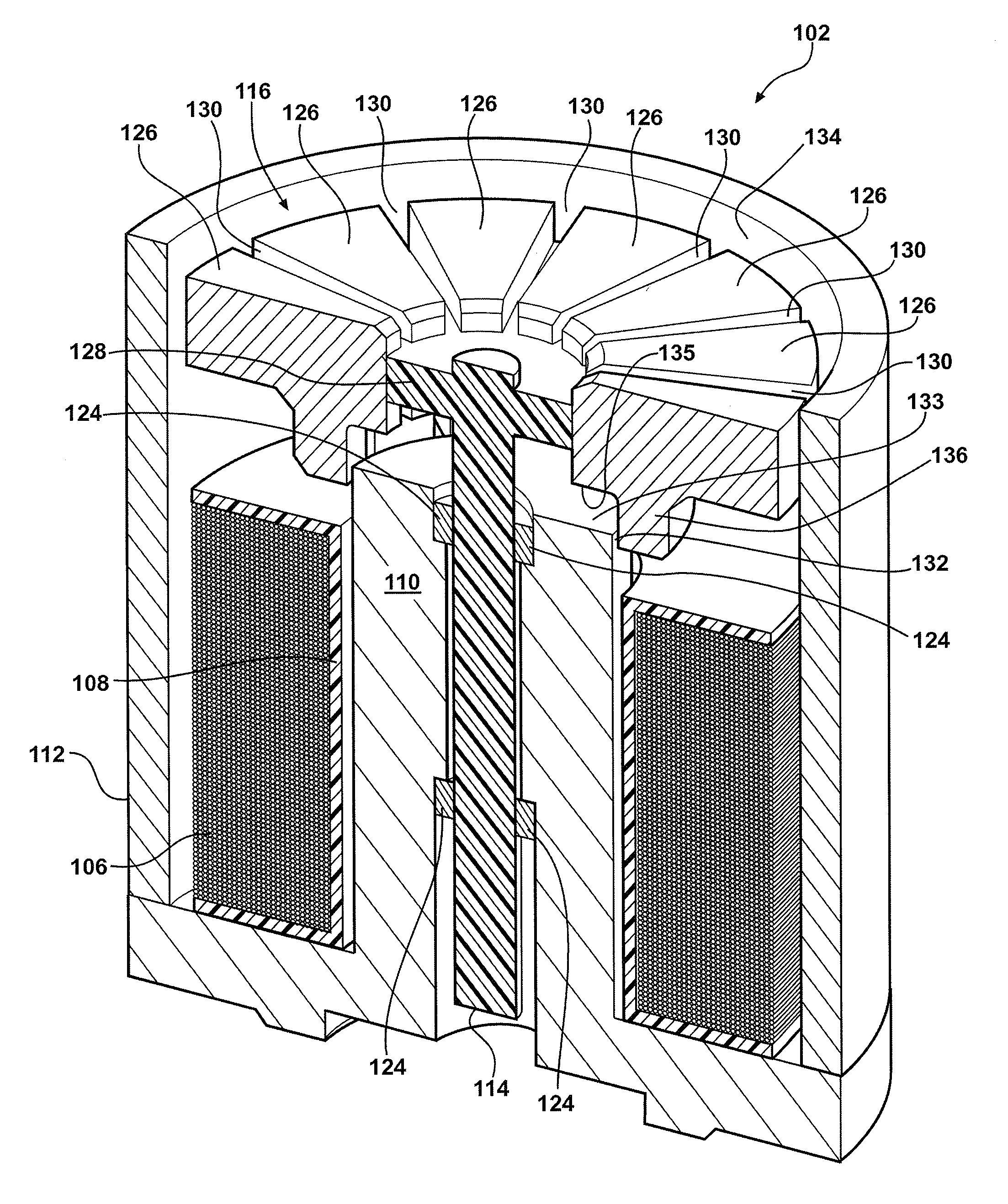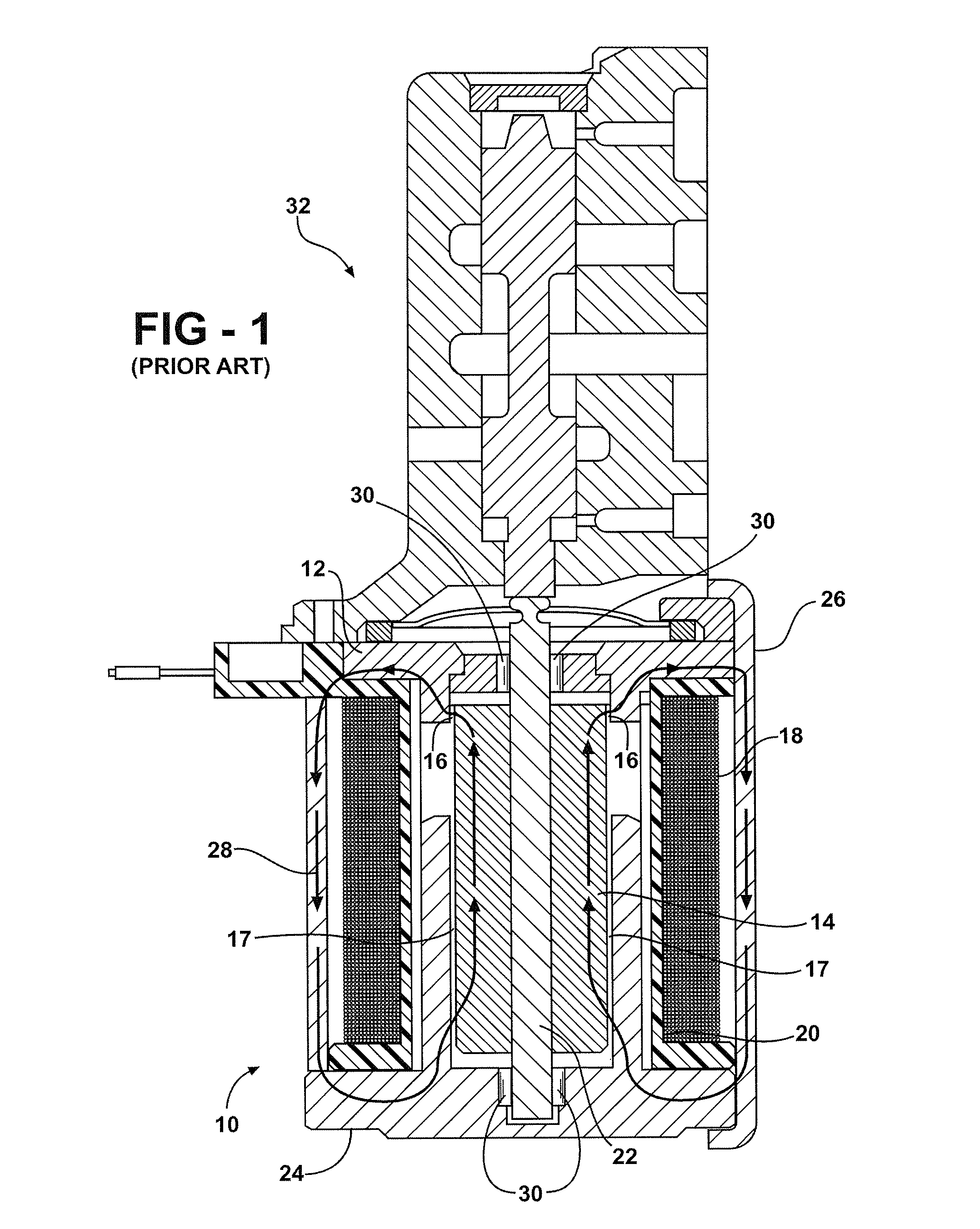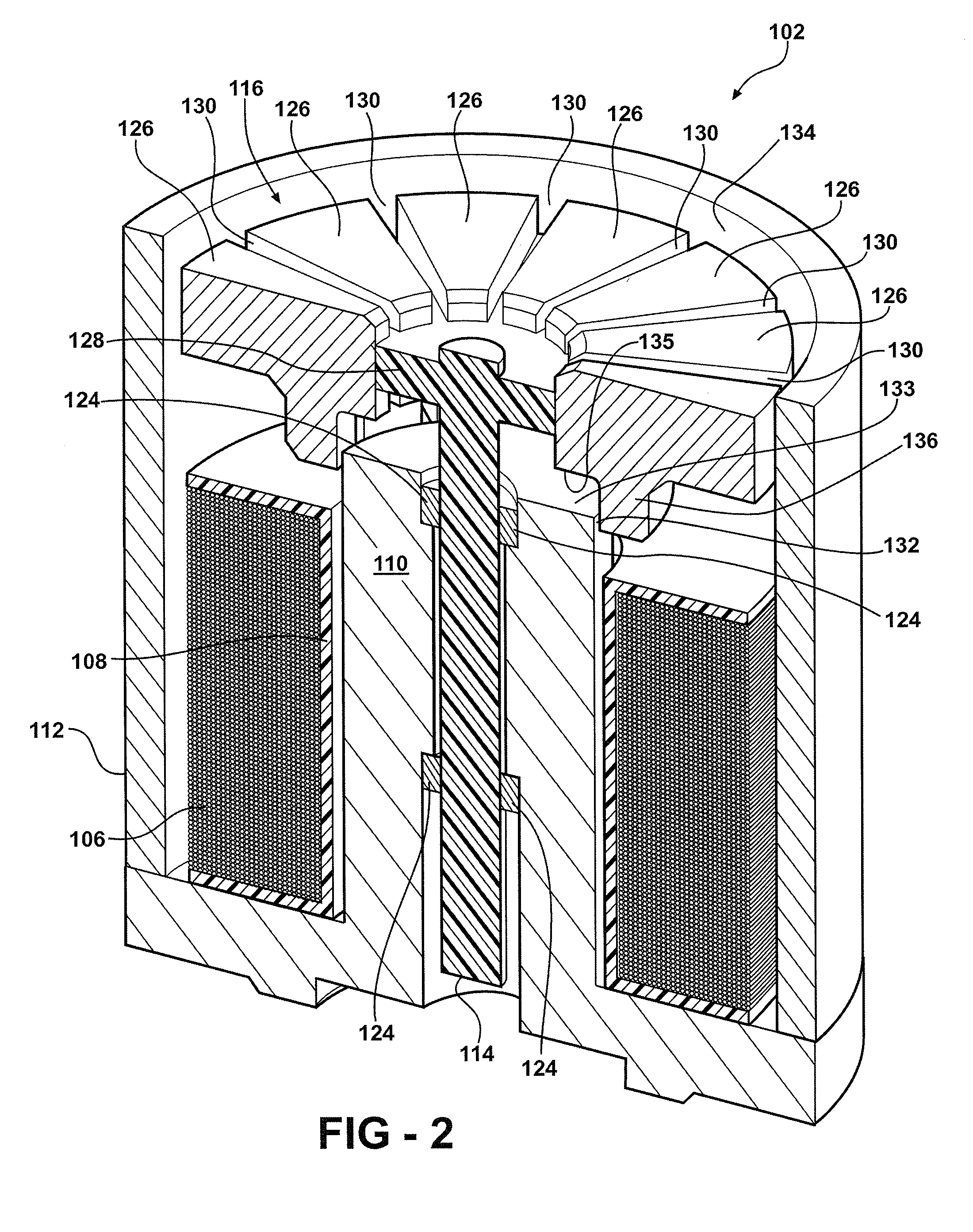Solenoid arrangement with segmented armature member for reducing radial force
a technology of radial force reduction and armature member, which is applied in the direction of magnets, operating means/releasing devices of valves, magnetic bodies, etc., can solve the problems of undesirable radial force acting, undesirable eccentricity of armatures, friction between components, etc., to minimize radial force, minimize radial force acting, and minimize friction between the armature member and any associated component surface.
- Summary
- Abstract
- Description
- Claims
- Application Information
AI Technical Summary
Benefits of technology
Problems solved by technology
Method used
Image
Examples
Embodiment Construction
[0020]The following description of the preferred embodiment(s) is merely exemplary in nature and is in no way intended to limit the invention, its application, or uses.
[0021]Referring now to FIG. 1, a cross sectional plan view showing a conventional prior art solenoid is shown generally at 10. The solenoid 10 has a pole piece 12 that partly overlaps and circumscribes an armature 14 forming a substantially narrow circumferential air gap, referred to as a working air gap 16, located between the pole piece 12 and the armature 14. The pole piece 12 is a stationary part toward which the armature 14 is magnetically attracted when a coil 18 is energized. The coil 18 at least partly circumscribes a bobbin 20. The armature 14 is formed as a single cylindrical piece having a central axial bore extending along its longitudinal length. The armature 14 and an armature pin 22 are assembled by press fit engagement wherein the armature pin 22 extends through the central axial bore of the armature 1...
PUM
| Property | Measurement | Unit |
|---|---|---|
| magnetic flux | aaaaa | aaaaa |
| radial force | aaaaa | aaaaa |
| non-magnetic | aaaaa | aaaaa |
Abstract
Description
Claims
Application Information
 Login to View More
Login to View More - R&D
- Intellectual Property
- Life Sciences
- Materials
- Tech Scout
- Unparalleled Data Quality
- Higher Quality Content
- 60% Fewer Hallucinations
Browse by: Latest US Patents, China's latest patents, Technical Efficacy Thesaurus, Application Domain, Technology Topic, Popular Technical Reports.
© 2025 PatSnap. All rights reserved.Legal|Privacy policy|Modern Slavery Act Transparency Statement|Sitemap|About US| Contact US: help@patsnap.com



